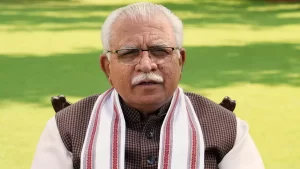
Haryana Chief Minister Manohar Lal Khattar has announced that all government Sanskriti primary schools in the state will have smart classrooms by the end of 2023. This is a significant step towards improving the quality of education in government schools and making it more accessible to students from all backgrounds.
Smart classrooms feature interactive whiteboards, computers, and various digital learning tools. This allows teachers to use a variety of teaching methods and make learning more engaging and effective for students. Smart classrooms also provide students with access to a wider range of educational resources, helping them to learn at their own pace and in their own way.
The Haryana government has already converted 4,035 government Sanskriti primary schools into smart classrooms. The remaining 3,365 schools will be converted into smart classrooms by the end of the year. This is a major undertaking, but it is an investment that will pay off in the long run by providing students with a better education and preparing them for success in the future.
Benefits of smart classrooms:
- “Smart classrooms engage students better, employing diverse teaching methods and digital tools for effective learning.
- Smart classrooms expand students’ access to diverse educational resources, enabling personalized and self-paced learning experiences.
- Smart classrooms enhance student outcomes by imparting essential skills and knowledge for 21st-century success.
Conclusion:
The Haryana government’s decision to provide smart classrooms for all government Sanskriti primary schools is a welcome step. This will enhance education in public schools, ensuring accessibility for students of diverse backgrounds. Smart classrooms enhance student engagement, offer diverse educational resources, and foster 21st-century skills for effective learning.
